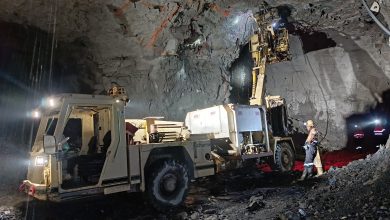
Effective lubrication for coal processing requires a two-pronged approach
Processing and transporting coal happens in harsh operating conditions. This is largely due to the presence of fine coal particles, called duff, and their corrosive impact on mechanical parts.
This means that it’s essential to use lubricants designed to repel duff and dirt to protect equipment at all stages across the coal-handling ecosystem. Gavin Ford, National Marketing Manager at Lubrication Engineers (LE) South Africa says that coal industry operators should take a two-pronged approach by using high-quality lubricants, applied in the right quantities and at the necessary intervals, in conjunction with key maintenance techniques.
“Along with fine particles, heavy loads, shocks and jars are typical of coal operations and lubricants designed to withstand these conditions are essential to ensure maximum efficiency; but these do need to be paired with making sure that key components are cleaned well before a lubricant is applied,” says Ford.
As duff is by nature extremely fine and pervasive, managing contamination in components like gear teeth surfaces, fill pipes, grease fittings and plugs need to get special attention in coal-processing environments. Correct storage of lubrication supplies is also important, so that foreign matter is not re-introduced when lubricants are applied.
The value of correct application
These maintenance practices are the foundation for correct application, which is another key consideration. “For example, plain sleeve bearings that are lubricated with grease should be pumped to capacity, or until some of the old grease escapes at the bearing end,” says Ford. “This provides a flushing action and seals the bearing against dirt getting in and causing damage.”
In places were where grease cannot easily escape, like fully sealed bearings, only a small amount of lubricant is usually required. “Specific operating conditions will determine how frequently each part must be serviced, but generally speaking, monitoring of the fluid through oil analysis is best,” says Ford. However, in instances where the lubricant is continuously reused, such as in enclosed gear units, the oil may need to be changed regularly to keep it free from abrasive matter.
Finding the right grease for each application
LE South Africa has curated a selection of greases that can tolerate the harsh operating environments surrounding coal while continuing to protect equipment and extend the life of heavy-duty machinery, says Ford.
The company usually recommends a combination of three long-lasting lubrication products for equipment in this sector. For extended service applications, the tacky Almagard® Vari-Purpose Lubricant (3752, 3751 & 3750) is a long-lasting, water-resistant red grease that runs cool, even in heavy-duty equipment. It also does not wash off, pound out or melt and run, even in severe conditions – like those linked to coal-based operations.
The Almatek® General Purpose Lubricant (1233 & 1235) is also known for its tacky qualities and it has been designed to withstand shock loading, pound-out and water washout in friction and anti-friction bearings, chassis points and other grease-lubricated applications. “This lubricant is a great solution for coal processing because it clings to metal surfaces and won’t wash off or pound out of pins, bushes and bearings,” says Ford.
The third product, Monocal™ GP Grease (1499), is an adaptable grease that has a calcium sulfonate complex thickener which is excellent at protecting equipment that deals with heat, moisture and/or heavy loads. Knowing which grease to use, where and how frequently is best done in partnership with a lubrication specialist who can help to find the best solution for coal processing applications.






